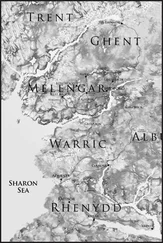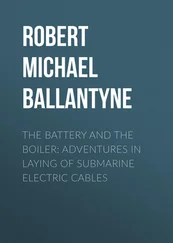Michael Neufeld - The Rocket and the Reich
Здесь есть возможность читать онлайн «Michael Neufeld - The Rocket and the Reich» весь текст электронной книги совершенно бесплатно (целиком полную версию без сокращений). В некоторых случаях можно слушать аудио, скачать через торрент в формате fb2 и присутствует краткое содержание. Город: Washington, Год выпуска: 2013, ISBN: 2013, Издательство: Smithsonian Books, Жанр: История, military_weapon, на английском языке. Описание произведения, (предисловие) а так же отзывы посетителей доступны на портале библиотеки ЛибКат.
- Название:The Rocket and the Reich
- Автор:
- Издательство:Smithsonian Books
- Жанр:
- Год:2013
- Город:Washington
- ISBN:978-1-58834-466-3
- Рейтинг книги:3 / 5. Голосов: 1
-
Избранное:Добавить в избранное
- Отзывы:
-
Ваша оценка:
- 60
- 1
- 2
- 3
- 4
- 5
The Rocket and the Reich: краткое содержание, описание и аннотация
Предлагаем к чтению аннотацию, описание, краткое содержание или предисловие (зависит от того, что написал сам автор книги «The Rocket and the Reich»). Если вы не нашли необходимую информацию о книге — напишите в комментариях, мы постараемся отыскать её.
The Rocket and the Reich — читать онлайн бесплатно полную книгу (весь текст) целиком
Ниже представлен текст книги, разбитый по страницам. Система сохранения места последней прочитанной страницы, позволяет с удобством читать онлайн бесплатно книгу «The Rocket and the Reich», без необходимости каждый раз заново искать на чём Вы остановились. Поставьте закладку, и сможете в любой момент перейти на страницу, на которой закончили чтение.
Интервал:
Закладка:
Nebel began making the rounds of government ministries, scientific institutions, and corporations to look for funds to continue Oberth’s work. In the first months of 1930 he may even have talked himself into the offices of Albert Einstein and Reich Interior Minister Carl Severing. Severing allegedly promised support, but soon thereafter the coalition cabinet he was in collapsed under the economic strain of the Great Depression, ushering in an era of weak right-wing governments dependent on the decree powers of Reich President Paul von Hindenburg, the retired Field Marshal. Nebel’s campaign nevertheless produced one success. After he met Becker, Army Ordnance gave him a fairly large sum of money; Nebel’s memoirs say 5,000 marks (about $1,200). The money was supposed to be at the disposal of Oberth for the launch of his rocket on the Baltic coast. Through Severing or Becker, Nebel was referred to the Reich Institution of Chemical Technology, which performed some of the same functions as the U.S. Bureau of Standards. Its director agreed to provide workshop space and a certification of Oberth’s rocket engine, which would be useful in further fundraising. 17
Nebel wired Oberth to join him in Berlin, which Oberth eventually did. After some work they finally succeeded in constructing a small 7-kg-thrust gasoline-liquid-oxygen engine. A famous picture taken on the day of the official test, July 23, 1930, shows Oberth and Nebel with the institute director and a number of helpers. Among them were two whose future roles at Peenemünde would be crucial: Klaus Riedel (1903–44) and Wernher von Braun (1912–77). Riedel (no relation to his namesake at Heylandt), a heavy-set young engineer and spaceflight enthusiast, would be Nebel’s primary designer in the rocket group. Von Braun, in a suit with knee breeches, looks both his age and his status: eighteen years old and wealthy. He came from venerable Prussian Junker stock and possessed the title of Freiherr (baron), although he did not consistently use it. His father had been a high-ranking civil servant in Imperial Germany, but was forced out in 1920 for not distancing himself sufficiently from a far-right coup attempt against the new Weimar Republic. The elder von Braun became a banker with close connections to President Hindenburg and the old reactionary elites. His son’s enthusiasm for engineering and advanced technology was mysterious to him. Wernher had become a teenage spaceflight fanatic after encountering Oberth’s works in 1926. By 1930 he was preparing to go to engineering school at the Technical University of Berlin, an unusual career choice for an aristocrat. 18
After the test Oberth once again returned to Rumania, but Nebel founded the famous Raketenflugplatz Berlin. Nebel and Riedel had already begun working on what they called the Mirak , for “minimum rocket,” a small rocket based on a modified Oberth engine. In his search for an appropriate testing ground, Nebel found an abandoned ammunition dump in Reinickendorf, a nondescript working-class district near the northern edge of Berlin. A number of massive concrete storage bunkers surrounded by earthen blast walls were situated in the midst of a hilly and wooded area. The only access road was poor, and the lowlands were swampy. Nebel was able to obtain permission from the city and the Reich Defense Ministry to use the land, and he, Riedel, and others opened the Raketenflugplatz on September 27, 1930. 19
Unbeknownst to anyone in the group except Nebel, the ballistics and munitions section had played a key role in securing him a lease for three years on the facility. Becker’s section may even have suggested the location. In short order, however, Becker became disgusted with Nebel. In a May 1931 memorandum to Ordnance’s aviation section, he denounced Nebel’s dishonesty; his lack of the “necessary practicality, quietude, and secrecy”; and his tendency to write “sensationalistic articles in newspapers and magazines” merely for the purpose of raising money. The issue of secrecy was doubtlessly crucial, but there was also a culture clash between Nebel’s blatant self-promotion and the mentality of the officer corps. Ordnance had thus cut off all contact with him before the spring of 1931. 20
Nebel’s modus operandi was later described by von Braun:
One day, Nebel took me out on one of his “acquisition trips.” We visited a director of the large Siemens corporation. Nebel told him eloquently about his plans—the liquid [-fuel] rocket motor, the stratosphere, lightning voyages across the ocean, the moon. The man was half amused, half impressed. The result was a trunk full of welding wires. With the wires we proceeded to a welding shop in town. Nebel told the shop superintendant that we had plenty of aluminum welding to do, but suffered from lack of a skilled man. Soon a deal was worked out, according to which Nebel would supply the shop with welding wires, while they would weld our tanks and rocket motors—all on a cash-free basis. 21
Nebel made it a point never to pay for anything. Shell Oil provided free gasoline, Siemens free meals. He acquired skilled labor by giving unemployed craftsmen free housing in the bunkers in return for work on the rockets; many of them became true believers. Dimitri Marianoff, Einstein’s “stepson-in-law” and a visitor at Raketenflugplatz, said: “The impression you took away with you was the frenzied devotion of Nebel’s men to their work…. Not one of these men was married, none of them smoked or drank. They belonged exclusively to a world dominated by one single wholehearted idea.” But they were not so single-minded that they could not celebrate. Von Braun reports that successes were often followed by drinking parties at a “downtown nightclub.” If so, he must have been footing much of the bill, since most of the others were receiving only miserly sums from unemployment insurance. 22
With Klaus Riedel primarily responsible for design and Rudolph Nebel concentrating on raising funds and materials, the Raketenflugplatz worked toward a flying version of the Mirak. After its launching in May 1931 it was rechristened the Repulsor , for the space vehicles in a popular German science-fiction novel. Throughout the rest of 1931 and into 1932, Nebel’s group launched various versions dozens of times, including many demonstrations for which spectators were charged admission. The Raketenflugplatz also publicly demonstrated the burning of larger rocket motors with thrusts of up to about 50 kg (110 lb). 23
The Raketenflugplatz’s many different engine and vehicle configurations embodied certain common principles. Liquid oxygen was the oxidizer, and the fuel was easily obtainable gasoline. In line with Oberth’s original suggestions, however, alcohol was later substituted, because that made it possible to add water, lowering the combustion temperature. Cooling the engine was a difficult problem; burnthroughs of nozzle walls, leading to explosions or erratic performance were common. The group first tried surrounding the engine with the liquid oxygen tank for cooling, then putting a jacket of water around the combustion chamber, and finally circulating watered alcohol through the cooling jacket before injection. The technique of using fuel circulation through the engine and nozzle walls, foreseen by Oberth and other pioneers, is called “regenerative cooling” and is a central feature of almost all large rocket engines.
All the early engines fed the fuels into the combustion chamber under pressure. The Raketenflugplatz at first used the liquid oxygen’s own evaporation to build pressure in that tank and employed a carbon dioxide cartridge in the gasoline tank, but in the end it adopted a better solution: Compressed nitrogen expelled the propellants in both tanks.
The most distinctive feature of the vehicles produced by the Berlin group, and by most other groups at the time, was the “nose drive” configuration. In contrast to the stereotypical image of the rocket-with engine and tail fins at the rear—these rockets had the engine at the top and the tanks trailing behind. According to Willy Ley, a VfR member and freelance science writer who came to the United States in 1935 to escape Hitler’s regime, the Raketenflugplatz had begun by consciously imitating the classic black-powder rocket. The first “One-Stick Repulsor” had its gasoline tank in a long tube attached to the side of the engine head. For centuries a stick had been used to give powder rockets a crude stability, but the aerodynamic principles had not been understood at the time, and even if the amateur experimenters did understand them, they had lacked the resources and systematic approach to exploit that knowledge. The bizarre-looking vehicles that resulted from the “nose drive” showed that the Raketenflugplatz never mastered stability and control in flight. But that was less important than getting a vehicle off the ground without endangering the onlookers too much. The endless problems with propulsion—burnthroughs, leaks, explosions, and valves and lines frozen by liquid oxygen—were much more pressing. 24
Читать дальшеИнтервал:
Закладка:
Похожие книги на «The Rocket and the Reich»
Представляем Вашему вниманию похожие книги на «The Rocket and the Reich» списком для выбора. Мы отобрали схожую по названию и смыслу литературу в надежде предоставить читателям больше вариантов отыскать новые, интересные, ещё непрочитанные произведения.
Обсуждение, отзывы о книге «The Rocket and the Reich» и просто собственные мнения читателей. Оставьте ваши комментарии, напишите, что Вы думаете о произведении, его смысле или главных героях. Укажите что конкретно понравилось, а что нет, и почему Вы так считаете.












